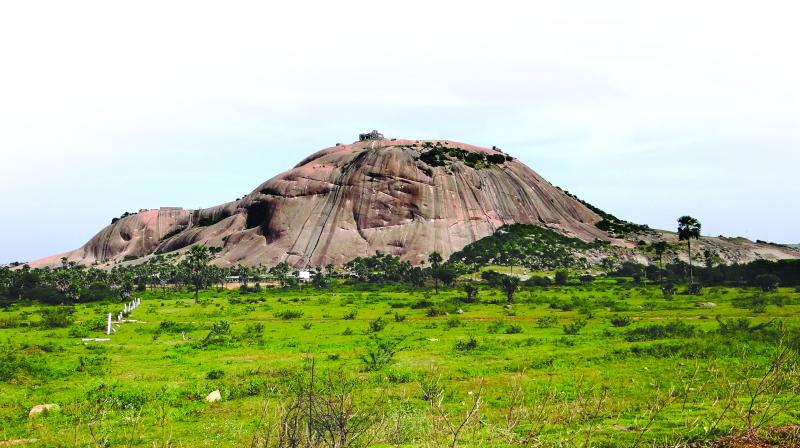Bhuvanagiri Fort, also known as the Bhongir Fort, is a historical fort located in the Nalgonda district of the Indian state of Telangana. The fort is situated on a hill, which is approximately 500 feet high, and is believed to have been built during the 12th century by the Western Chalukya ruler, Tribhuvanamalla Vikramaditya VI.
The fort is constructed in a unique style of architecture, which is a combination of the Chalukya and Kakatiya styles. The fort has several levels and is surrounded by a moat, which adds to its defensive capabilities. The fort also has several gateways, which are known as “Darwazas”, and each gateway is guarded by several bastions.
The main entrance of the fort is through the “Macherla Gate”, which is named after the nearby town of Macherla. The gate is made of granite and has intricate carvings of various gods and goddesses. The gate also has several inscriptions, which provide valuable information about the history and construction of the fort.
The fort has several other structures, including a granary, stables, and a mosque. The granary, which is known as the “Huzurabad”, was used to store food grains during times of war. The stables, which are known as the “Paigahs”, were used to house the horses and elephants of the soldiers. The mosque, which is known as the “Jama Masjid”, is an important religious structure and was used by the soldiers and their families.

One of the main attractions of the Bhuvanagiri Fort is the “Rani Mahal”, which was used as a residence by the royal family. The Rani Mahal has several beautiful murals, which depict scenes from the Hindu epic, Ramayana. The murals are well-preserved and provide a glimpse into the rich history and cultural heritage of the region.
The fort is also known for its strategic importance, as it played a major role in several wars and battles. The fort was captured by the Bahmani Sultanate in the 14th century, and later by the Qutb Shahi dynasty in the 16th century. The fort was also used as a stronghold by the Marathas during their campaign in the Deccan region.
In recent years, the government and local authorities have taken several measures to preserve and restore the Bhuvanagiri Fort. The fort is now a popular tourist destination and attracts visitors from all over the country. The fort’s rich history, unique architecture, and beautiful murals make it a must-visit destination for anyone interested in the cultural heritage of the region.
Book Your Flights : Here 30% OFF on Booking
Book Your Hotels : Here 20% OFF on Booking

0 Comment